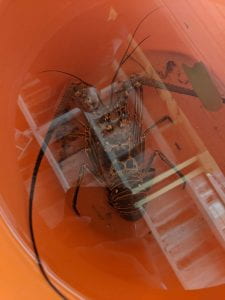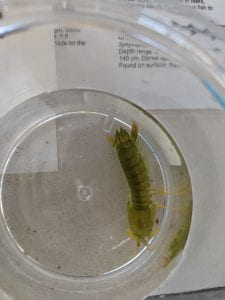Throughout this course I have learned and experienced so much in such a short amount of time, and I have definitely walked away with an unshakeable sense of wonder and respect for these two tropical ecosystems. One of the main ideas this course has left me with is in the surprising amount of similarities between these two seemingly separate ecosystems, and how that might relate to their current biodiversity. Both coral reefs and rainforests are shaped by their how they maximize the use of limited resources such as light, nutrients, wave energy, and soil. The variety of complex ways in which these organisms adapt to these conditions is reflected in their unmatched biodiversity.
Some personal connections I made along the way are definitely related to what I studied for my topic lecture: the biogeographic history of the region. Both of the specific ecosystems we visited were highly shaped by the history of geologic processes in the region. Glover’s atoll was created by past volcanic activity, and the limestone sediments that characterize the karstic landscape of the Chiquibul were deposited millions of years ago. Actually, the origin of the calcium carbonate in this limestone is from the many millions of marine shelled creatures that lived there when that area was underwater, so the connections run even deeper! Both areas were also deeply impacted by continental movements, specifically the connection of North and South America 3 million years ago, which separated the oceans and joined the terrestrial organisms, but still both leading to continued diversification.
This course was more difficult in some ways than I expected, but also so much fun! I definitely expected to get lots of bug bites while there, but I certainly did not expect the sheer volume of mosquito, sand mite, and chigger bites I came home with! My least favorite part was probably getting seasick on the first boat ride in, that was pretty miserable. Future TFBs beware, and bring itch cream and Dramamine! But as is true with most field work, there were so many fun moments that made all the uncomfortable parts so so worth it! Some of my many favorite moments include: seeing giant ceiba trees, watching a jaguar feed, eating lionfish ceviche, holding a comb jelly, touring the Caracol Archeological Reserve, and seeing the beloved Mexican burrowing toad! And all of these moments were made even better by the friendships I made with my classmates, which I am very grateful for.
Before I post this final blog, I want to leave it by sharing some of the most important or surprising things I learned on this trip that will stick with me for a long time. The entire guest lecture by Dr. Arevalo was definitely memorable for me, especially in his dedication to the ecology and conservation of the scarlet macaw, and his point that there is only limited impact for ecology research if we do not actively apply it to conservation practices and efforts. I will also always remember our conversations on the health of coral reefs, and how quickly climate change can damage these beautiful places. It was something I was always aware of in the periphery of my mind, but there is something different about firsthand experiencing the incredible diversity of these reefs and then learning how threatened they really are. One final thing I will always remember is seeing and learning about the insane complexity of leafcutter ant colonies! We learned that the characteristics of the ants change as the colony ages and can spread into massive structures that last with a single queen for a max of about 25 years! The fact that such complex eusocial animals have evolved is so insanely cool!
This class and the people I got to know along the way are unforgettable and I had such a great time!
-Phoenix



